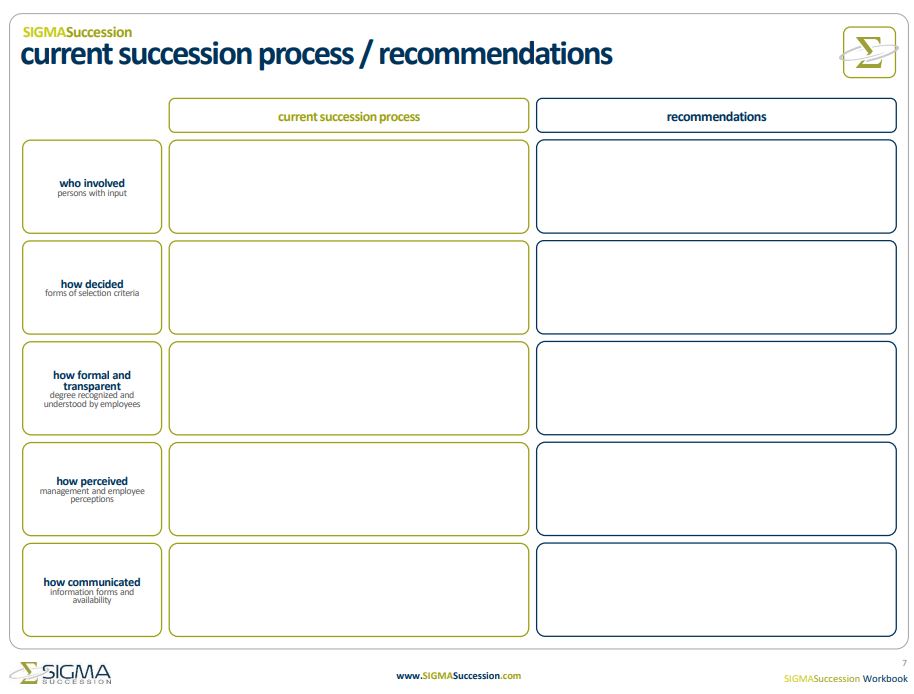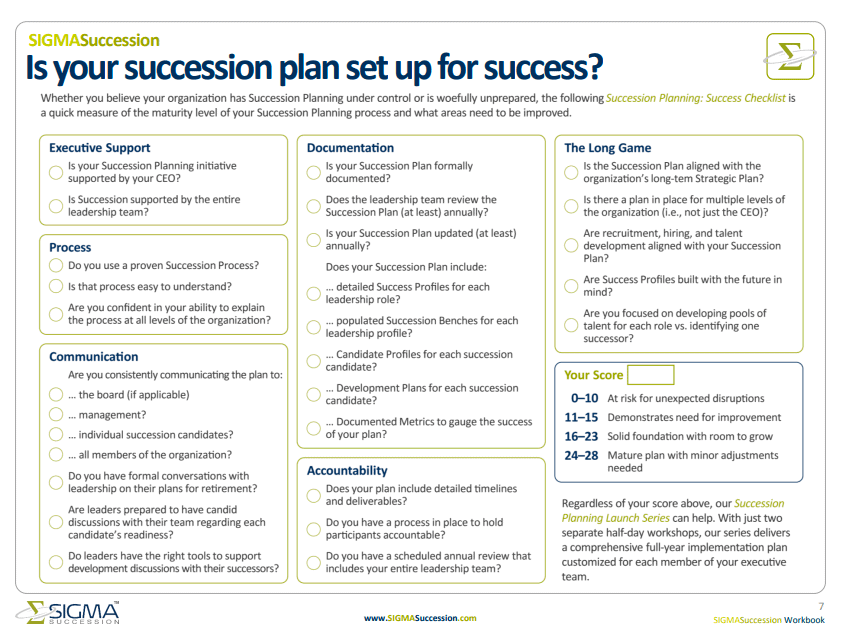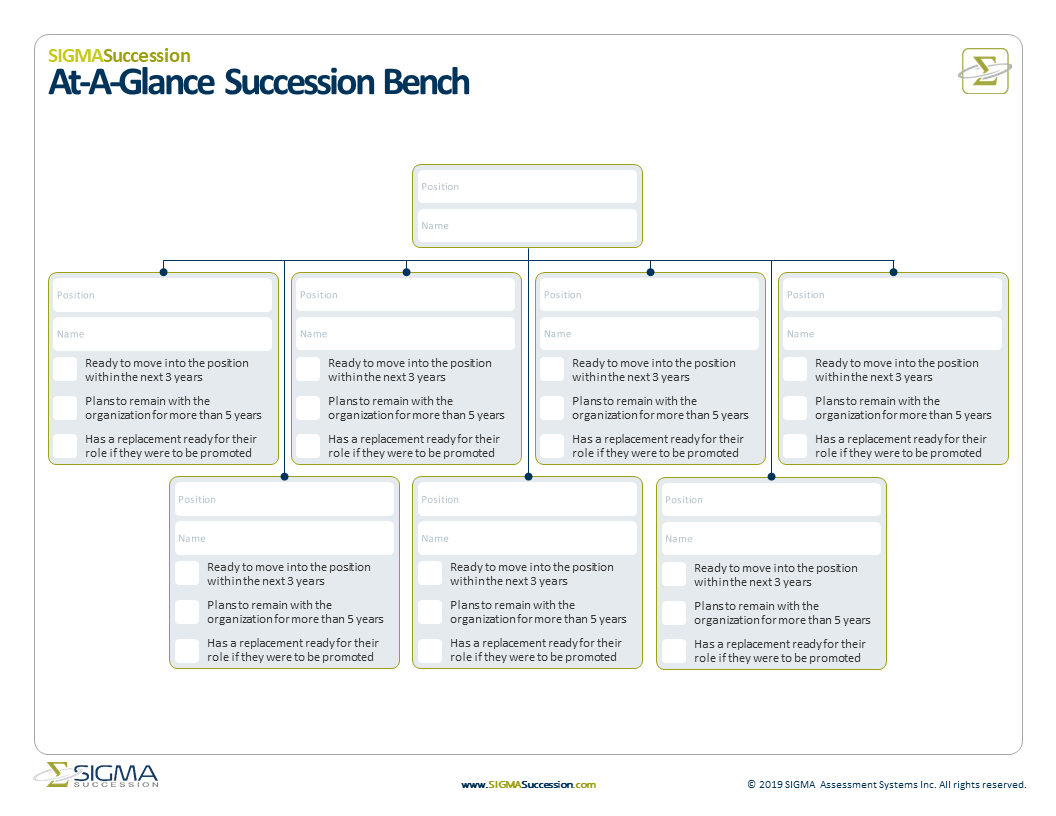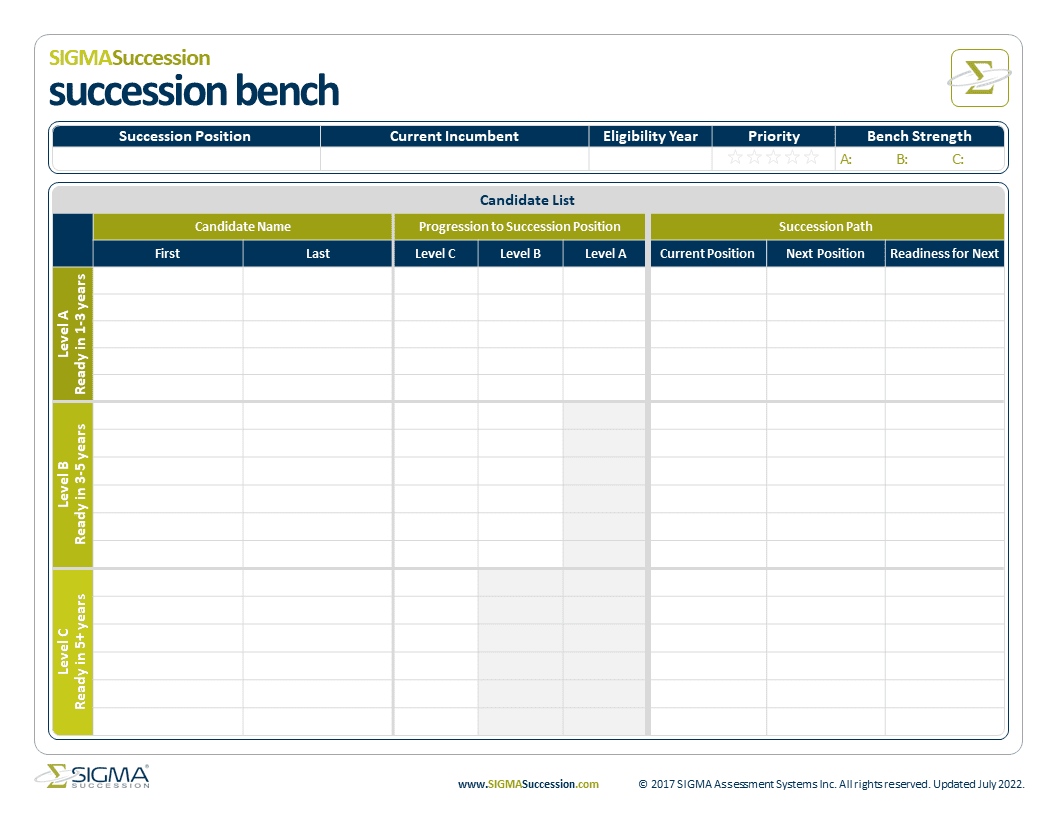Getting Senior Management Buy-In for Succession Planning
Many leaders recognize the importance of succession planning, yet few have a tangible plan in place. Securing senior management’s commitment to invest time and resources in these efforts can be challenging. SIGMA’s succession planning process is designed to help organizations identify and develop internal potential to replenish existing talent when key roles become vacant. This workbook offers the information you need to gain buy-in from your management team and start building an effective succession plan.
.
About the Workbook
An estimated 70% of succession planning initiatives fail within two years due to waning support from senior leadership.1 For that reason, the first step in building a successful succession plan is to craft a compelling business case that highlights its importance. Tailor this case to your industry and organization to ensure it resonates and drives commitment.
SIGMA’s Getting Buy-in From Management workbook guides you through a series of exercises to build your case for succession planning.
After completing the workbook you will be able to identify:
- why succession planning is important
- what your organization’s current succession process entails
- how your current process compares to expert recommendations
- which areas in your organization are particularly vulnerable to sudden departures
- the depth of your current talent pool
- the next steps in the succession planning process
Why Succession Planning is Important
A robust succession planning process provides a roadmap for success. It creates structure, ensures consistency, and aides in communicating the plan across all levels of the organization. It also allows business continuity despite inevitable changes in personnel. Engaging in the succession planning process will help your leaders retain organization-specific knowledge, motivate employees to pursue opportunities for development and promotion, and minimize costs associated with turnover..
Reviewing Your Current Planning Process
Before you can secure buy-in for your succession plan, it is important to ensure that you have a strong plan. Begin by reviewing the processes you currently have in place. Consider who is involved, the criteria used for candidate selection, the level of formality and transparency in the process, and how effectively it is communicated and perceived across the organization.

.
Next, complete the ‘Is Your Succession Plan Set Up for Success?’ checklist to assess the maturity of your planning process and identify areas that need to be improved.

.
The Structure of Your Organization
To determine which roles should be prioritized in your succession plan, complete the at-a-glance organizational chart. Begin by placing the CEO at the top, followed by direct and indirect reports below. For each individual, assess their readiness to step into the CEO role within the next three years, their intention to stay with the organization for at least five years, and the availability of potential replacements for their current position.

.
Review your completed organizational chart carefully. Any role with unchecked boxes should be included in your succession planning. Roles with multiple empty boxes, or clusters of blank boxes within a department, should be marked as high priority..
Determining the Strength of Your Succession Bench
The succession bench is designed to assess the depth of your talent pool by tracking the readiness of candidates for each critical role.
To build a succession bench, start by identifying the key roles essential for succession planning, noting the current incumbent and the urgency for each position. Then, list all potential succession candidates for each role, categorized into three readiness levels:
- Level A: candidates will be ready for role in less than three years
- Level B: candidates will be ready for role in 3-5 years
- Level C: candidates will be ready for role in more than five years
Use the Succession Path column to monitor candidates’ progression through roles that will equip them with the experience needed for the critical position.

.
Next Steps
Now that you’ve evaluated your organization’s succession process and succession bench, review your organizational chart for dependencies or potential areas of concern. Identify high-priority areas, such as:
- Roles with incumbents who are eligible or likely to retire
- Positions with high turnover rates
- Individuals holding critical, specialized knowledge not widely shared
Evaluate the skills essential for success in these roles. Are there individuals who already possess these skills? If a skilled person is promoted, who will step into their current role? Review SIGMA’s succession process recommendations to identify any gaps in your existing succession plan.
Need a Succession Plan?
If your organization needs an effective succession plan fast, SIGMA’s Succession Planning Sprint is the ideal solution. In just one high-impact, four-hour executive strategy session, our consultants work closely with your leaders to create a customized 12-month succession plan for each member of your leadership team — delivered in only 30 days. complete the form below and one of our consultants will contact you shortly.
Ready to Get Started?
.
- Dennison, K. (June 25, 2024). The Importance of Succession Planning Now More Than Ever. Forbes. Retrieved from https://www.forbes.com/sites/karadennison/2024/06/25/the-importance-of-succession-planning-now-more-than-ever/ ↩︎
